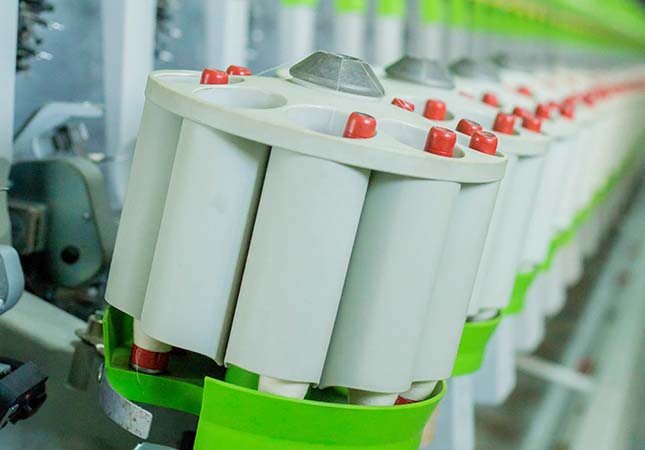The manufacturing sector,includes the textile machinery manufacturing in the United States experienced a significant decline in June 2023, as reported by S&P Global's US manufacturing Purchasing Managers' Index (PMI). The PMI, which serves as a key indicator of manufacturing performance, fell to 46.3 in June, down from 48.4 in May. This drop suggests that the manufacturing industry's performance has deteriorated in seven out of the past eight months.

The latest PMI reading was primarily influenced by a notable contraction in new orders during June. This decrease in new orders was the most substantial observed so far this year and the second-largest decline in over three years. Companies consistently attributed this decline to suppressed demand, which arose from a combination of inflationary pressures and higher interest rates
The declining PMI and the sharp contraction in new orders signal ongoing challenges and headwinds faced by the US manufacturing sector. These struggles have persisted for several months, reflecting a concerning trend. The adverse effects of inflationary pressure and higher interest rates have weighed on consumer demand, leading to reduced orders for manufactured goods.
Inflationary pressures, characterized by rising prices of raw materials, energy, and labor costs, have eroded the purchasing power of consumers. As a result, individuals and businesses have become more cautious in their spending, leading to decreased demand for manufactured products. Moreover, higher interest rates have increased borrowing costs for businesses, limiting their ability to invest in new projects and expand their operations.
The combination of these factors has created a challenging environment for manufacturers, as they grapple with reduced demand and increasing costs. The decline in the PMI for seven out of the past eight months indicates that the sector's recovery remains elusive.
To address these challenges, policymakers and industry leaders will likely focus on implementing measures to mitigate inflationary pressures and stabilize interest rates. Additionally, efforts to stimulate consumer demand and boost confidence in the economy may be necessary to revitalize the manufacturing sector.
Overall, the recent PMI report highlights the current struggles faced by the US manufacturing sector. With ongoing contractions in performance and new orders, it is crucial for stakeholders to work collaboratively and adopt effective strategies to support the recovery and long-term growth of this vital sector of the economy.
Simultaneously, the weakening of external demand further contributed to the challenges faced by the US manufacturing sector. According to S&P Global, new export orders experienced a decline for the thirteenth consecutive month, with a sharp rate of decrease that ranked among the fastest observed in the past three years.
As a result, client reticence and reduced international demand led to a contraction in production, following a three-month period of expansion. The rate of decline in production was one of the most significant recorded in 2023 thus far, highlighting the severity of the downturn. Some companies also reported that they no longer needed to increase production to replenish their stocks due to weak demand in the market.
However, there was a silver lining in terms of price pressures. In June, input costs experienced a decline for the second consecutive month, resulting in a dissipation of price pressures for manufacturers. The drop in material prices was the most substantial observed since May 2020, providing some relief to manufacturers grappling with rising costs. Suppliers were frequently noted to offer promotions and incentives in an attempt to encourage purchases of inputs, further alleviating cost burdens for manufacturers.
While the reduction in input costs may provide temporary respite, the persistent decline in new export orders and weakening external demand continue to pose significant challenges for the US manufacturing sector. The contraction in production and the reluctance of clients to make purchases signify the ongoing struggles faced by manufacturers in stimulating demand and maintaining steady growth.
To address these issues, manufacturers may need to explore alternative markets and diversify their customer base to compensate for the decline in export orders. Additionally, efforts to enhance competitiveness through innovation, cost optimization, and streamlined operations can help mitigate the impact of weak demand.
Policymakers may also play a crucial role by implementing measures to support international trade, foster export-oriented policies, and address the factors contributing to weakened external demand. By stimulating global economic growth and stability, it may be possible to revive the export sector and provide a much-needed boost to the manufacturing industry.
In conclusion, the prolonged decline in new export orders, along with the contraction in production and weakened client demand, present significant challenges for the US manufacturing sector. While there has been some relief in terms of reduced input costs, concerted efforts are required to stimulate demand, diversify markets, and support the long-term growth and resilience of this vital sector of the economy.
SUNTECH Textile Machinery offers a comprehensive range of products that cater to various fabric types. Our product lineup includes, but is not limited to, pinking machine, loom machine, weaving machine, beam truck, fabric cutting machine, motorized beam trolley, beam storage, and fabric inspection machine. With our innovative approach and extensive experience, SUNTECH Textile Machinery remains at the forefront of the textile industry. We warmly welcome requests for quotes and cooperation opportunities from you!




